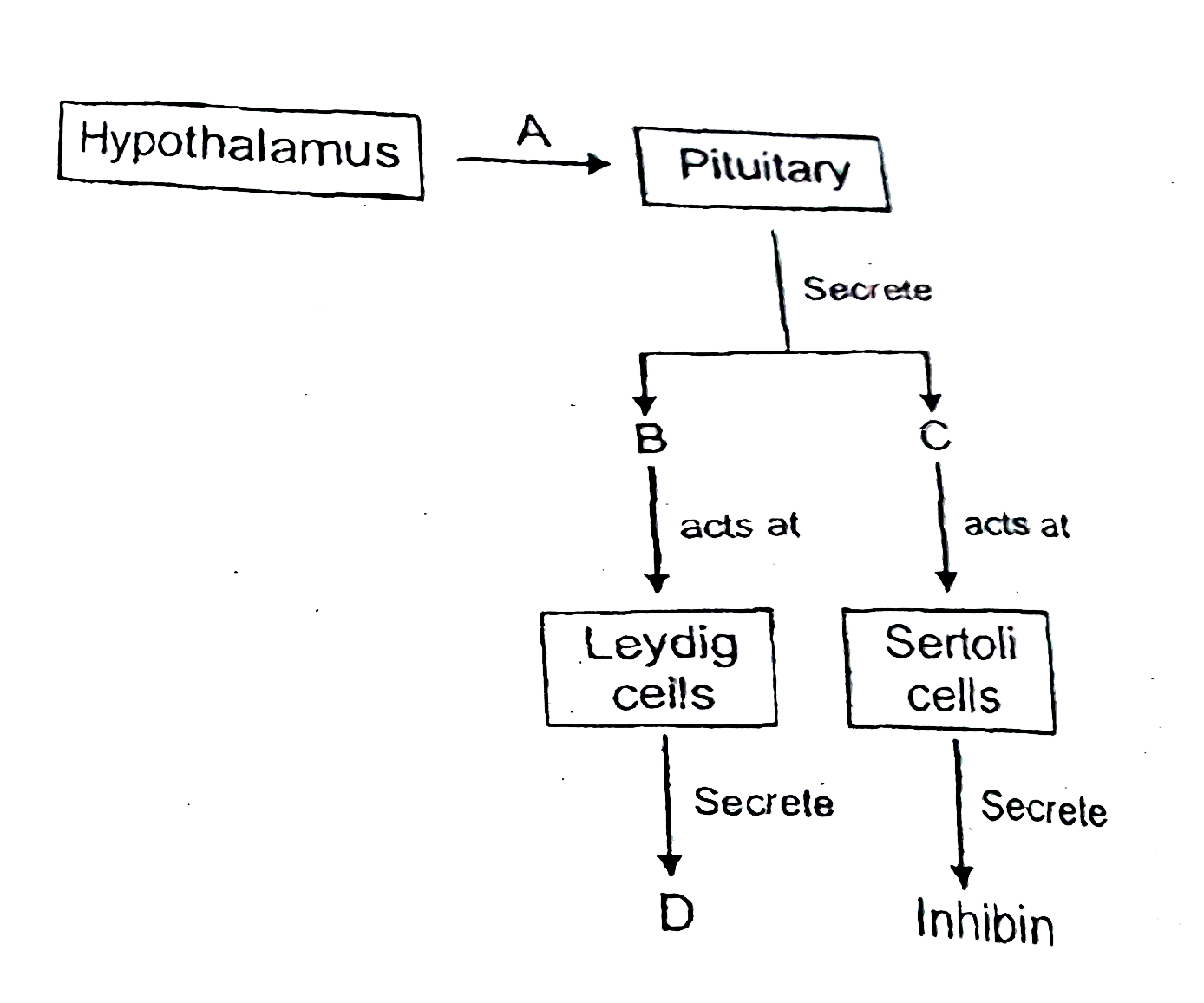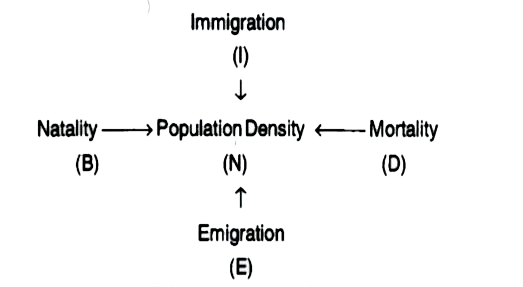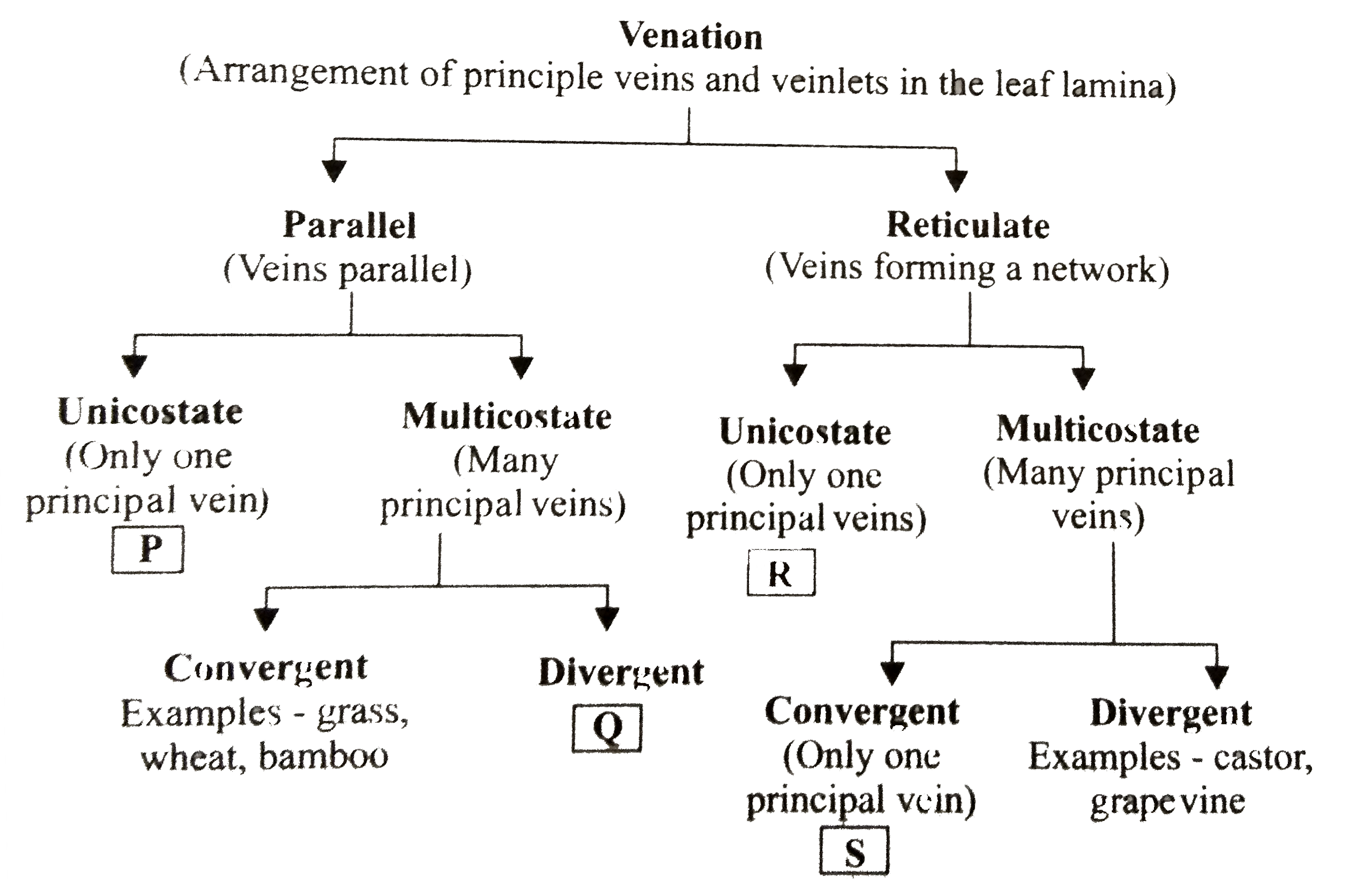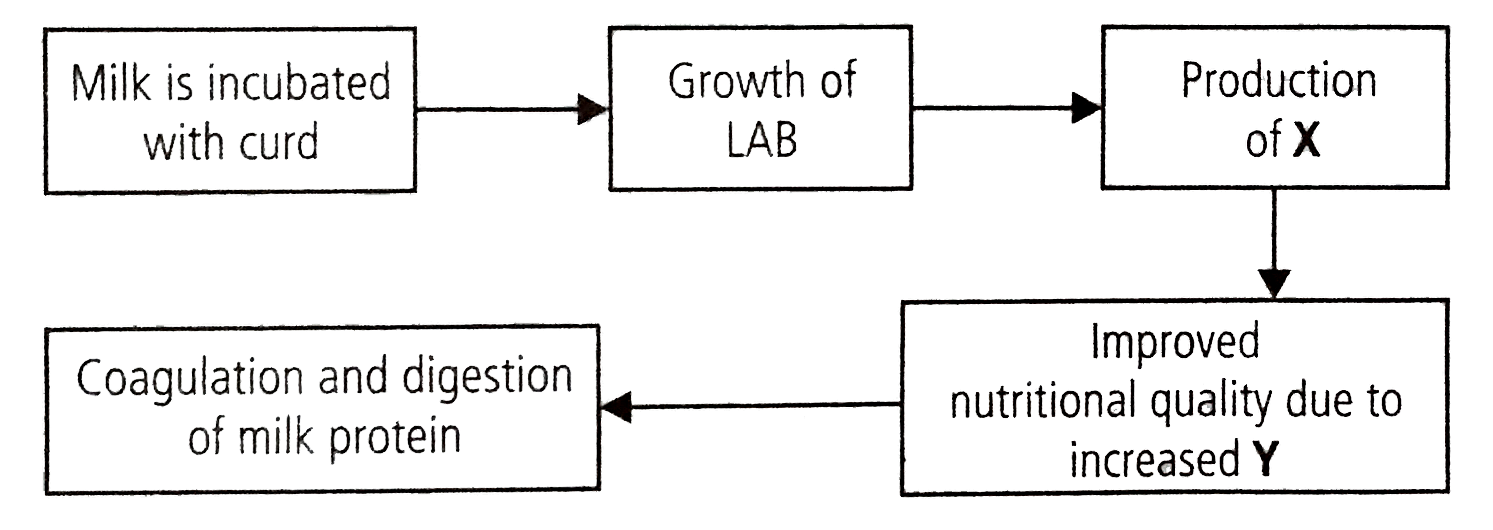Study the following flow chart. Name the hormones involved at each stage. Explain their functions.
Step-by-Step Solution:
1. Identify the Hormones Involved:
- The flowchart begins with the Hypothalamus, which secretes Gonadotropin-Releasing Hormone (GnRH).
- GnRH acts on the Pituitary Gland, leading to the secretion of two key hormones: Luteinizing Hormone (LH) and Follicle Stimulating Hormone (FSH).
- These hormones then act on the Testes.
2. Functions of Each Hormone:
- Gonadotropin-Releasing Hormone (GnRH):
- Function: Stimulates the anterior pituitary gland to release gonadotropins (LH and FSH). It is crucial for the initiation of the reproductive hormone cascade.
- Luteinizing Hormone (LH):
- Function: Acts on the Leydig cells in the testes to stimulate the production of androgens (primarily testosterone). Testosterone is essential for the development of male secondary sexual characteristics and the stimulation of spermatogenesis.
- Follicle Stimulating Hormone (FSH):
- Function: Acts on the Sertoli cells in the testes to promote spermatogenesis. It stimulates the production of androgen-binding protein (ABP), which concentrates testosterone in the seminiferous tubules, facilitating sperm maturation.
3. Overall Process:
- The combined action of LH and FSH leads to the differentiation, production, and maturation of sperm (spermatozoa) in the testes. This process is vital for male fertility, as mature sperm are required for fertilization of the female egg.
Summary of Hormones and Their Functions:
- GnRH: Stimulates the pituitary gland to release LH and FSH.
- LH: Stimulates Leydig cells to produce testosterone, promoting spermatogenesis.
- FSH: Stimulates Sertoli cells to support sperm maturation and concentrate testosterone.
- The flowchart begins with the Hypothalamus, which secretes Gonadotropin-Releasing Hormone (GnRH).
- GnRH acts on the Pituitary Gland, leading to the secretion of two key hormones: Luteinizing Hormone (LH) and Follicle Stimulating Hormone (FSH).
- These hormones then act on the Testes.
- Gonadotropin-Releasing Hormone (GnRH):
- Function: Stimulates the anterior pituitary gland to release gonadotropins (LH and FSH). It is crucial for the initiation of the reproductive hormone cascade.
- Luteinizing Hormone (LH):
- Function: Acts on the Leydig cells in the testes to stimulate the production of androgens (primarily testosterone). Testosterone is essential for the development of male secondary sexual characteristics and the stimulation of spermatogenesis.
- Follicle Stimulating Hormone (FSH):
- Function: Acts on the Sertoli cells in the testes to promote spermatogenesis. It stimulates the production of androgen-binding protein (ABP), which concentrates testosterone in the seminiferous tubules, facilitating sperm maturation.
- The combined action of LH and FSH leads to the differentiation, production, and maturation of sperm (spermatozoa) in the testes. This process is vital for male fertility, as mature sperm are required for fertilization of the female egg.
- GnRH: Stimulates the pituitary gland to release LH and FSH.
- LH: Stimulates Leydig cells to produce testosterone, promoting spermatogenesis.
- FSH: Stimulates Sertoli cells to support sperm maturation and concentrate testosterone.
Similar Questions
Study the flow chart given below . Name the hormones involved at each stage and explain their functions .

View SolutionComplete the following flow chart

View SolutionComplete the following flow chart:

View SolutionStudy the flow chart.Name the hormones labelled as A, B, C, D at each stage .


View SolutionName the hormone involved in vernalisation.
View SolutionStudy the following flow chart and choose the correct option.

View SolutionName the hormones involved in regulation of spermatogenesis.
View SolutionStudy the following flow chart and select the correct option for P, Q, R and S.

View SolutionName the hormone secreted by pars intermedia and its function.
View SolutionStudy the following flow chart depicting the formation of curd from milk. Identify the missing parts X and Y.

View Solution
